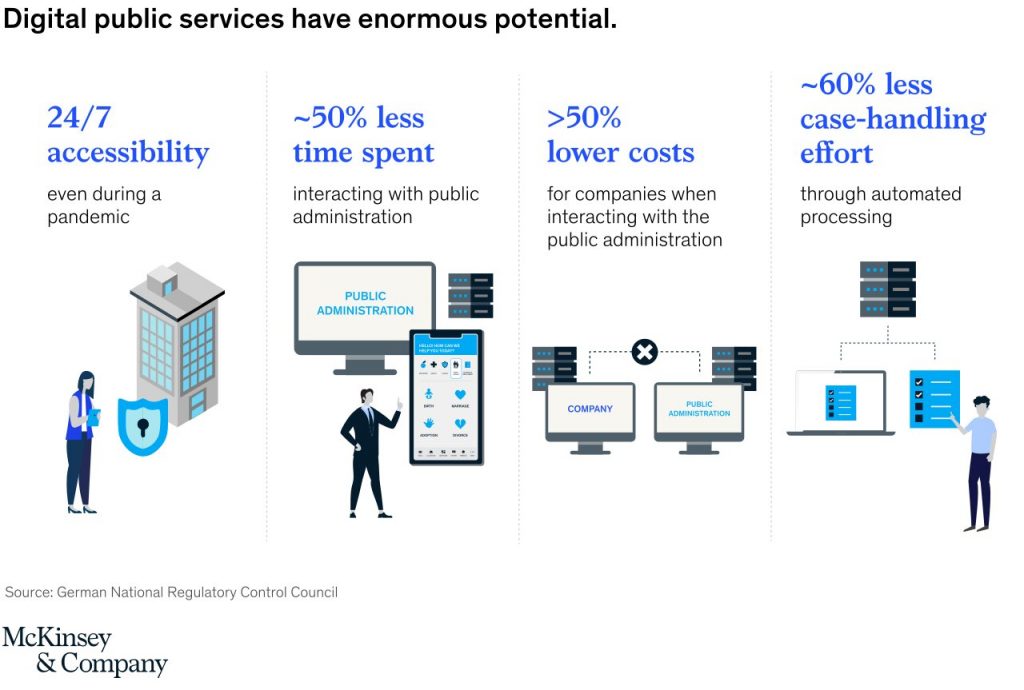Public services, as the name suggests, started as means of assistance to public issues and also provide support in government-related matters. Through evolution, the services became from the open public council meeting in the king’s room to different government branches offering different public services such as the municipality, security, legalization, etc.
But with the growing population and rise in complex legislative and regulations, government services that still utilize the paper or physical office as means of information gathering and exchange can no longer perform at their highest efficiency. Governments all around the world now face long wait times, loss of information, slow processing speeds amongst many other problems.
The most critical solution to all the problems is the digitization of public services. Through digitizing the services, governments can become more efficient, resilient and provide the highest public satisfaction. Current technologies can provide the strength and resources to tackle the present problems and as these technologies get frequent updates and upgrades, digitization is also future proof.
The private sector has been extremely fast to adapt and utilize the power of digitization, which in some governments have still not done yet. Digitization can increase the availability of services from certain times of the day to 24/7 and accessibility from certain locations to all over the world. The process of information gathering and exchange also becomes highly efficient and accurate. Digitization lowers the interaction by almost 40% for gather information and retrieval is almost instantaneous. Another advantage is the cost reduction is almost by 60% since it reduces the number of locations and employees required and increases the case handling capacity by 60%.
Smaller population governments were able to successfully digitize their government services. Some first-hand examples could be Estonia, the United Arab Emirates among many others. But there are still many potential problems that large governments need to handle before committing to a complete digital transformation. Applications routinely require hard copies of supporting documents to still be printed and signed, and many online forms are just as complicated to complete as the paper versions. Furthermore, the user experience tends to vary across government websites, and users often require multiple accounts and digital IDs to manage their needs.
While a completely digital future is still long away, there is potential in many different governments around the world to start their digitizing process to not fall behind other countries. If the problems such as coordinating between different stakeholders such as different departments, services, etc, the ability to build a broader support channel, and current limits in technical capabilities are address, the transition will be smooth from a paper-dependent government to digital government.

